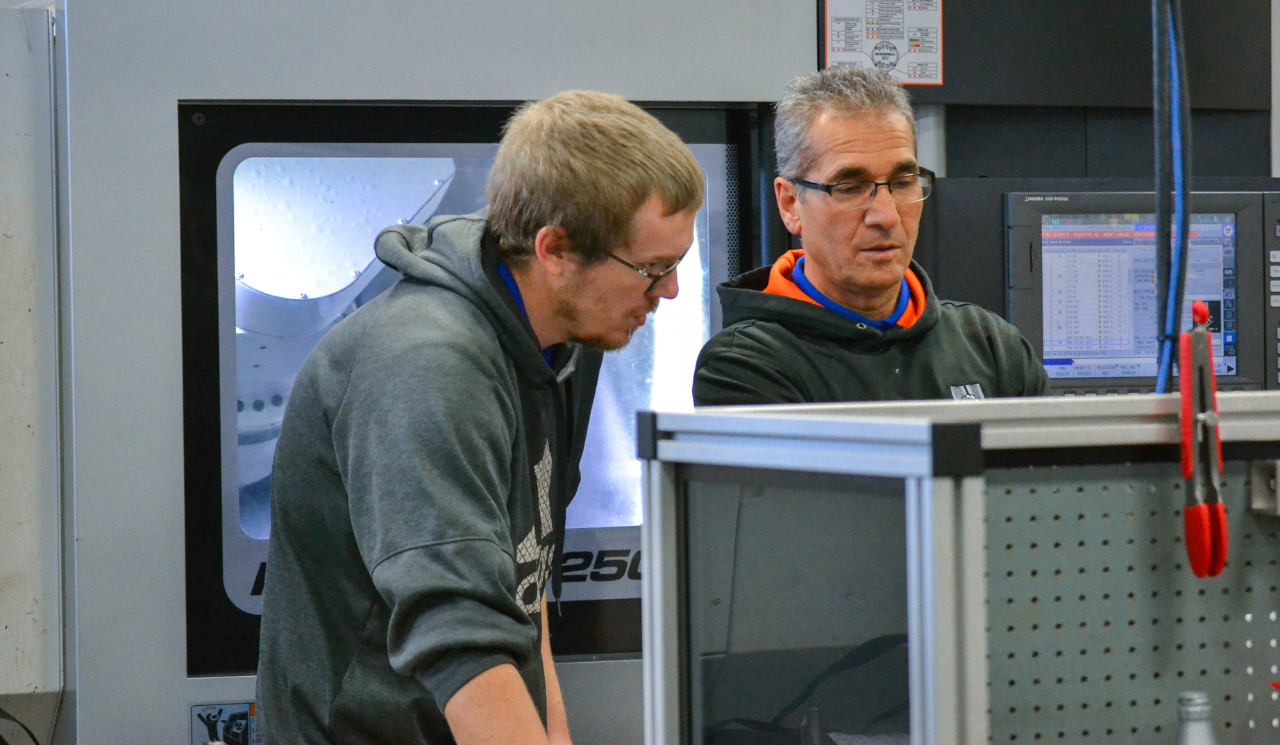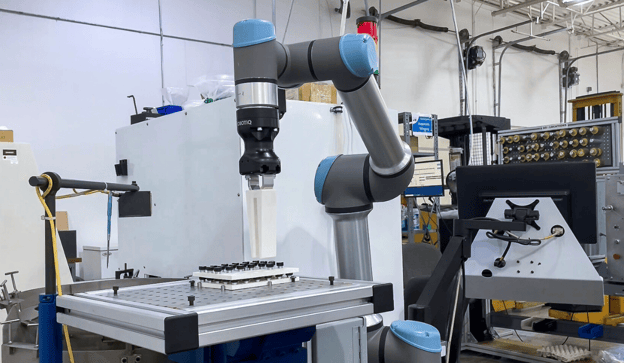In the fast-paced world of manufacturing, it’s essential to have a supplier who’s adaptable to change and never grows stagnant. That’s why, since our founding, Hirsh Precision has developed and maintained a strong culture of continuous improvement.
Continuous improvement exists at every level of our organization. It’s important that every team member shares ideas, suggestions, and new processes for improvement, and we support our team with training and resources to ensure success. We didn’t create a culture of continuous improvement just for the sake of our team; the goal was – and still is today – to provide value to our customers.
Giving the team this ability to affect their own work benefits our customers in a big way. Our culture of continuous improvement allows Hirsh to be more agile, adapting to our customers’ changing needs and requirements and strengthening the resilience and performance of the supply chain at the same time.
8 Ways We’ve Developed Our Culture of Continuous Improvement
Creating a culture of continuous improvement did not happen overnight. We trained an entire team to not just look at things critically or think outside the box when a problem arose, but to always keep these practices at top of mind until it became ingrained in our company’s DNA.
It became the difference between making change proactively, rather than reactively. That’s how you develop a culture of continuous improvement.
It involves everyone - top to bottom
We knew our continuous improvement culture had to be present at every level of our organization. Each person who joins our team learns from Day One that they can, and are expected, to contribute to our team’s efficiency and play a role in improving our processes.
Each team member, from the seasoned director to the new engineer, is aligned in our ongoing effort to improve, innovate, and grow.
Everyone is trained
We developed our culture of continuous improvement through time, coaching, and leading by example, but training plays the biggest role in our company’s continuous improvement program. The leadership team and the newest team member are all taught the same principles and given the same tools to execute improvement ideas.
While leaders propagate the culture by being vocal about ideas and improvements to encourage everyone to share their own ideas, the continuous improvement training we give every team member is critical for seeing measurable change.
Everyone is empowered
Our continuous improvement culture is further developed by giving everyone at Hirsh the power to make a change happen. There are several methods our team members can use to implement change, and those paths are available to everyone.
Tools are provided to make it easier
Suggestion and quick win forms that are easy to access and fill allow everyone to submit an idea or improvement quickly. All suggestions are managed in a management tool that enables anyone to check on the status of an idea and provide additional insight.
Everyone also has the ability to message the continuous improvement manager directly if they have questions or need help executing an improvement.
Identifying waste is an important theme
The main improvement principle we teach at Hirsh Precision is how to identify waste, which we define as anything that does not create value for our customers. This customer-centric value is defined by what the customer finds important, so anything that doesn’t contribute to delivering what the customer wants is waste.
Eliminating waste for our customer can take the form of streamlining a process, removing nonessential materials from production, or reducing unnecessary actions that an employee takes throughout the production process.
We make it customer-focused
We train people to ask themselves, “Does this action benefit the product or experience for the customer in a positive way?” This critical thinking helps our team focus their improvement ideas on processes that are slow, tedious, or unnecessary so they can start developing better methods.
Implementing these improvement ideas doesn’t just improve the quality of work that our team produces, but it also results in benefits for the customer, which we’ll discuss in more detail below.
Involving all stakeholders is crucial
We also emphasize collaboration, specifically with stakeholders and subject matter experts. So yes, anyone is free to make a change, but first they talk with other people that may be affected by the change, as well as individuals who have expertise on the area or process being changed. This collaboration ensures that only beneficial changes are made, while also implementing the best version of the improvement.
Hirsh’s culture allows for rapid improvement and change, and while it might seem risky to let every team member implement change whenever they want, we mitigate this risk by training our team to think critically and collaboratively.
We celebrate success to help build momentum
Finally, we maintain our continuous improvement culture by celebrating the changes our team makes throughout the year. All the improvements, big or small, are shared with the team to thank the people responsible and also spread the idea around. We share them on our intranet site HirshWeb, and also on an improvement board.
By consistently sharing these improvements, other team members are inspired to either replicate a change for their area or to come up with their own idea for improvement.
How does our Continuous Improvement Culture Benefit our Customers?
Hirsh Precision’s culture of continuous improvement is critical for our internal growth and development, but it also benefits our customers. Not only does our continuous improvement culture make us agile and adaptable, but it allows us to identify opportunities to help our customers grow.
As our customers prepare to grow, our ongoing continuous improvement efforts allow us to produce their parts with more efficiency, reduce manufacturing costs and shorten lead times. These benefits play a major role in our customers’ ability to scale up their business and adapt to their own markets.
Further, customers come to Hirsh largely because we have this continuous improvement culture, and they know that our team’s efforts will have cascading effects on their own performance.
To give you an example, we manufacture thousands of parts which form a family of components for a disruptive industrial company. This part family originally incurred a high cost due to frequent setups. Our solution to this cost-related problem? We determined which tools were consistently used throughout the machining process for this part family and created a master tool kit that always lives in the machine. As a result, setup times are greatly shortened, and our customers benefit from significantly reduced costs.
Let’s look at another example of our continuous improvement culture in action. When we saw lead times and costs stacking up for a customer’s part, we reevaluated the entire manufacturing process. Rather than waiting for our customer to ask us for ways we could reduce costs and lead times, we reached out to our plastic supplier and arranged to have them punch out the shape and size we needed in the chosen material, thereby eliminating a lot of machining time. We were able to deliver the exact same product to our customer but at much lower costs and shorter lead times.
When we can make a part faster and at a lower cost, those are game-changing benefits to the customer. Even improvements that target an internal process rather than a specific customer part add value to our customers. These improvements enhance the overall efficiency of our workforce, which means more work can be done with less effort. It also means fewer mistakes and time delays, resulting in more productive, value-adding work.
At Hirsh Precision, continuous improvement is a part of everybody’s job and our customers are better off because of that. When we think of new ways to deliver on time and with fewer defects, the skills we need to troubleshoot tricky situations continue to improve. Furthermore, our team can celebrate the rewards of these improvements and the time saved can be used to support customers in new ways.
Because of the many years we’ve practiced a culture of continuous improvement, we see thoughtful improvements being made at every level of the organization today. Our team’s ability to collaborate, think critically, and adapt not only means we are improving our service for our customers, but also means we are able to recruit more talented, like-minded individuals into the company.




